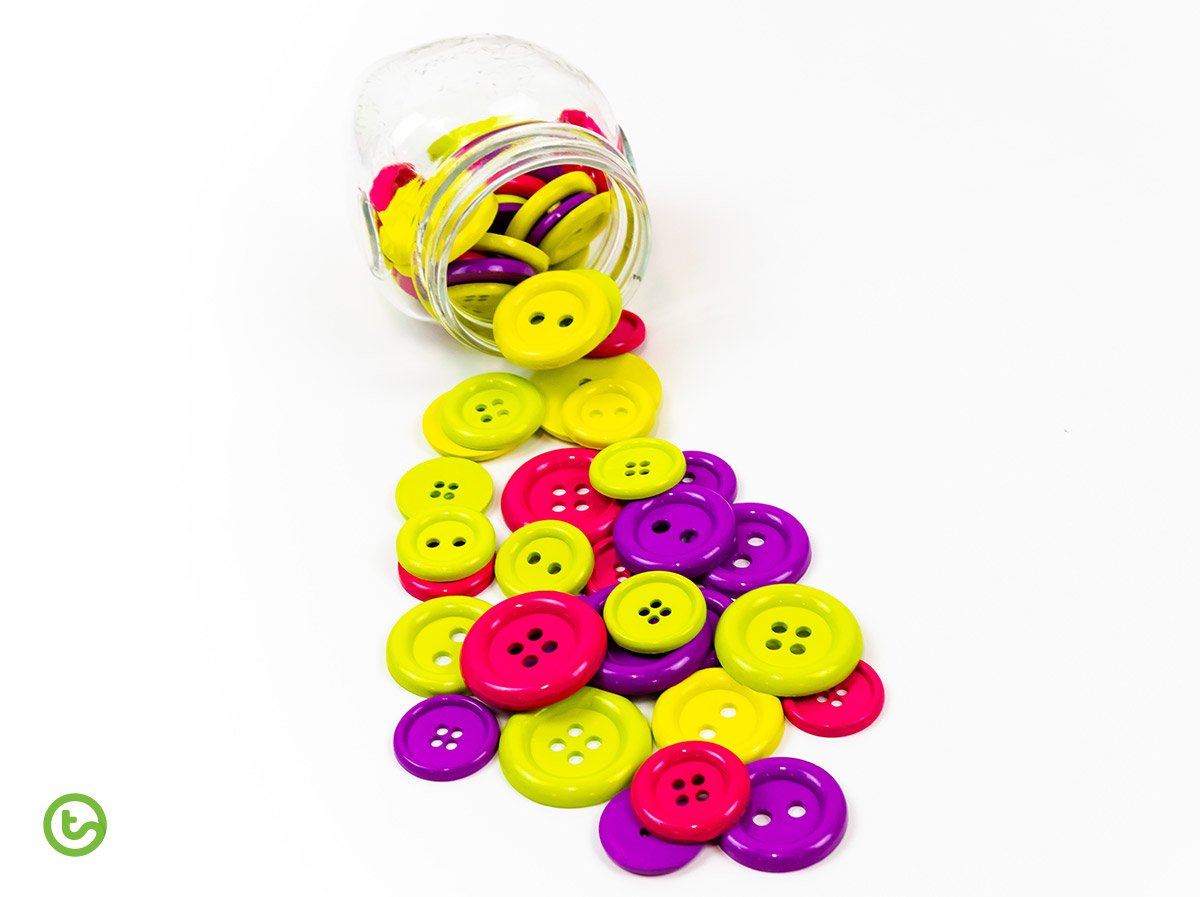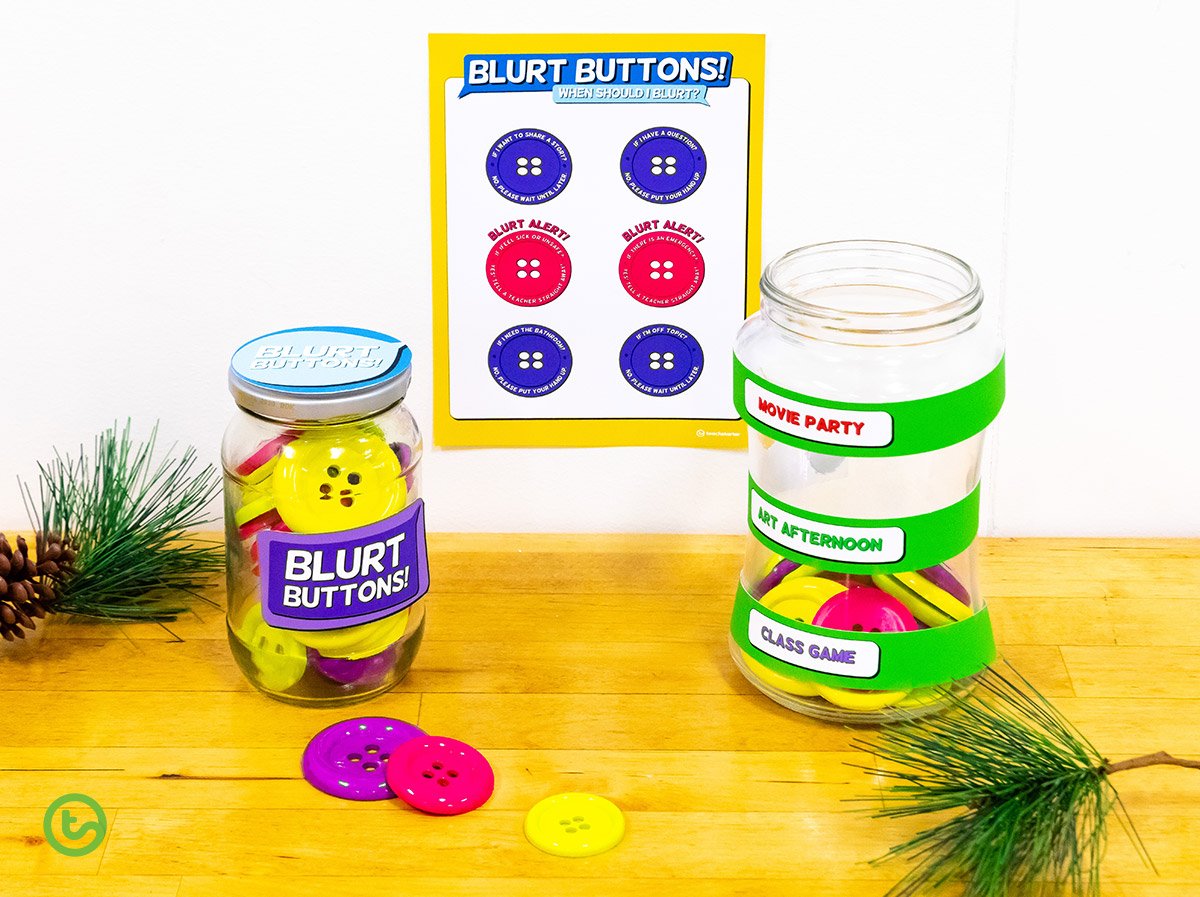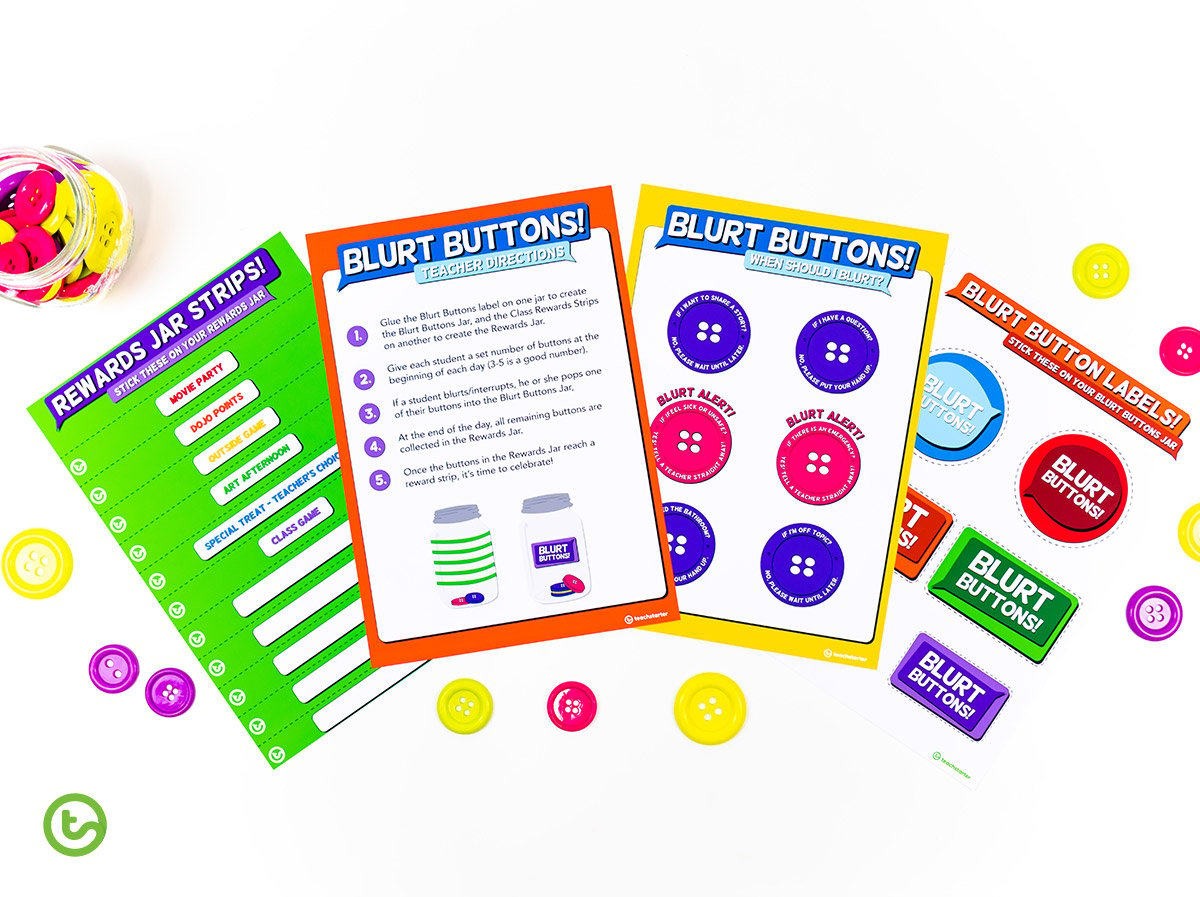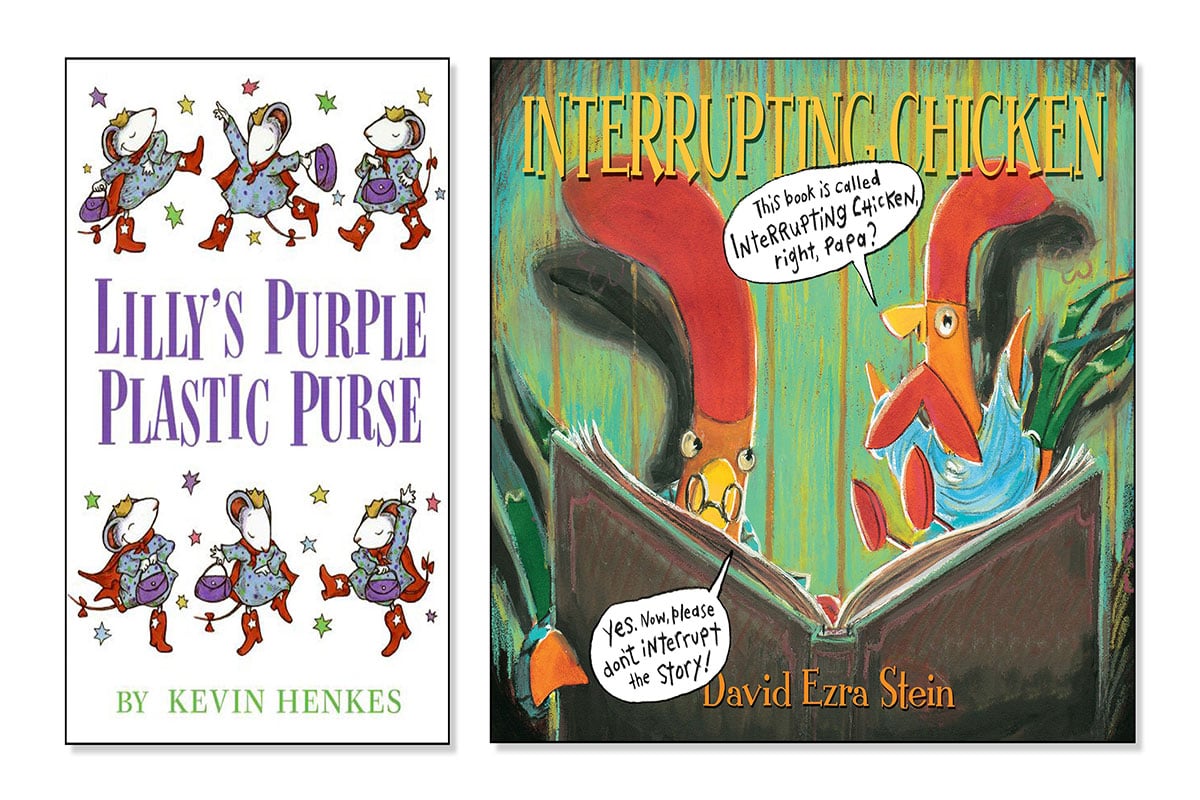Ever feel like there’s a whole lot of blurting going on in your classroom?
Blurt Buttons are a bright, fun classroom management strategy to help curb calling out. If you’re looking for a new strategy to manage impulsiveness and noise in your room, read on!
Students musing aloud: “It’s cloudy outside”, telling you about their neighbor’s three-legged cat, or asking you how many days there are until Christmas?
As educators, it is our responsibility to help children develop social skills, to help them understand the contexts in which certain behaviors are (or are not) appropriate.

What is Blurting?
Children just love blurting – saying what’s on their minds. They may call out for several reasons including stress, impulsivity, competition, or simply because it’s what they’ve always done (and got away with).
As normal as it is, habitual calling out can be one of the most frustrating classroom management issues faced by teachers.
Our new Blurt Buttons Resource Pack is here to help!

To Banish Blurting, You’ll Need:
- Two clear containers (we used glass jars)
- Bag of Buttons
- Craft glue
- Blurt Buttons Set-Up resources
Setting Up Blurt Buttons
The Teacher Directions sheet outlines the basic rules of the Blurt Buttons system.
- On one jar, glue or tape the Blurt Buttons label to the front.
- Next, attach the round label to the lid. This is your Blurt Buttons jar.
- On the second jar, attach your chosen rewards strips at intervals. You may wish to use some of the blank strips to add your own chosen rewards. Two or three strips will work well for a medium-sized mason jar. This is your Rewards Jar.
- Our When Should I Blurt? Poster is a fantastic visual aide to help students decide whether it’s appropriate for them to call out to you or a friend. It could be used as a great starting point to read as a class.

Give each student a number of buttons to keep on their desks.
If you have a very talkative class or are just beginning to work on calling out, perhaps using five would be great. You can gradually reduce it to two or three as the students become better at waiting to speak.
If a student blurts, he or she must put a button back into the Blurt Buttons jar.
At the end of the day, any remaining Blurt Buttons on desks go into the Rewards Jar, earning kids points towards a treat!
Using Blurt Buttons to Quell Calling Out
For older children who call out, you could simply demonstrate the process and explain the expectations, using the poster from the kit. I would recommend printing it on cardstock and displaying it somewhere prominent in the room, where it’s highly visible to the kids.
For younger children, it may help to identify the issue of calling out and provide some examples through literature.
Here are two great books, Lilly’s Purple Plastic Purse and Interrupting Chicken, which focus on interrupting and untimely calling out:
Rewarding Non-blurting Behaviour!
Now for the fun part: the rewards!
As students see the buttons in the Rewards Jar accumulate, anticipation and excitement will build. What’s great about this type of whole-class system is that it encourages teamwork.
There are some suggestions printed on the reward strips (movie afternoon, whole class game, etc), but you may choose something more tangible, like a certificate or small prize for each student in the class. Blank rewards strips are included in the pack.
For more information on implementing a positive behavior framework for your classrooom, check out our blog, What is PBIS? Everything Teachers Need to Know About this Positive Behavior Framework.

So whether you’ve got a whole class of Chatty Cathys or just one back-row bandit who won’t stop blurting, Blurt Buttons may just be what your classroom needs!








Comments